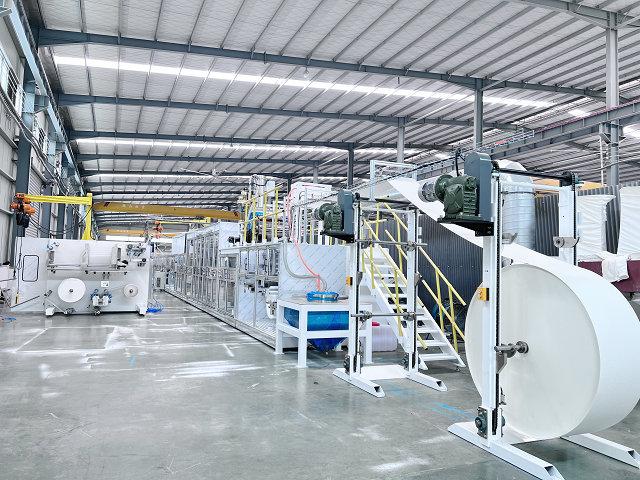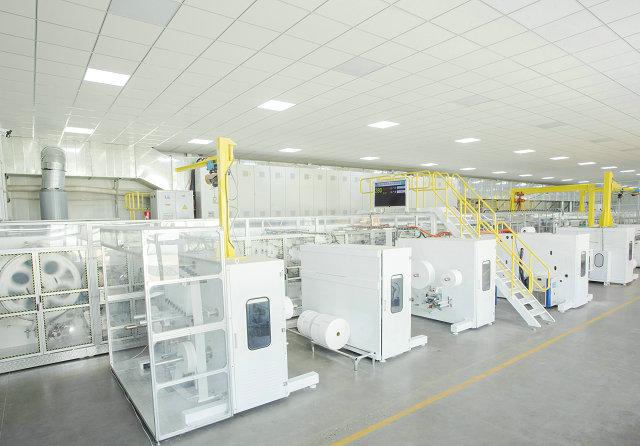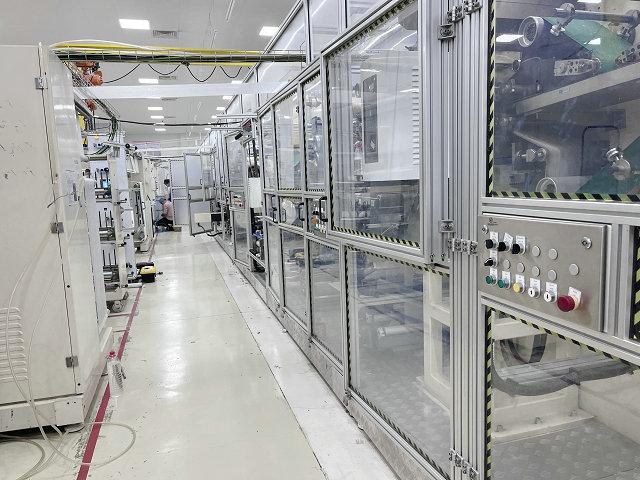Author:Haina Machinery Factory FROM:Diaper Machinery Manufacturer TIME:2024-11-23
Starting a sanitary pad manufacturing business can be a rewarding venture, especially considering the growing demand for hygiene products in various markets. However, like any business, it requires careful planning and financial investment. Understanding the startup costs involved is crucial for entrepreneurs looking to enter this industry. This article will break down the key expenses associated with launching a sanitary pad manufacturing business, providing a comprehensive overview for potential investors and business owners.

The first step in establishing a sanitary pad manufacturing business is conducting thorough market research. This involves analyzing the target market, understanding customer preferences, and studying competitors. The costs associated with market research can vary widely, but it often includes expenses for surveys, focus groups, and data analysis tools. Additionally, creating a solid business plan may require hiring consultants or market analysts, adding to the initial costs. On average, entrepreneurs should budget between $2,000 to $10,000 for this phase.
Starting a sanitary pad manufacturing business entails navigating various legal requirements. Entrepreneurs must register their business, obtain necessary licenses, and comply with health and safety regulations. Depending on the location, these costs can range from $1,000 to $5,000. It is also essential to consider potential expenses for intellectual property protection, such as patents or trademarks, which can add several thousand dollars to the budget.

The manufacturing process requires a suitable facility equipped with specialized machinery. Renting or purchasing a space will incur significant costs, typically ranging from $5,000 to $20,000 monthly, depending on the size and location. Additionally, acquiring manufacturing equipment such as production lines, cutting machines, and packaging units can cost between $50,000 to $300,000. Entrepreneurs must also account for utilities, maintenance, and insurance for the facility.
To produce sanitary pads, businesses need to source high-quality raw materials, including absorbent materials, non-woven fabrics, and adhesives. The initial inventory investment is critical, as it will determine the production capacity. Depending on the scale of operation, the cost of raw materials can range from $10,000 to $50,000. Building relationships with reliable suppliers is essential for maintaining quality and managing costs effectively.
Hiring skilled labor is another significant expense in the manufacturing process. Depending on the size of the operation, businesses may need to employ machine operators, quality control staff, and administrative personnel. Labor costs can vary by location but generally range from $30,000 to $100,000 annually per employee. It's vital to factor in benefits, training, and recruitment costs when budgeting for labor.
Establishing a brand presence in the competitive sanitary pad market requires effective marketing strategies. Initial marketing efforts, including branding, packaging design, and promotional campaigns, can cost between $5,000 to $25,000. Digital marketing, social media presence, and product launches are essential for reaching potential customers and building brand awareness. A well-planned marketing strategy can significantly influence the success of the business.
Once the product is manufactured, getting it to the market involves additional costs related to distribution and logistics. This includes transportation fees, warehousing, and handling charges. Depending on the distribution channels chosen—such as direct sales, retailers, or e-commerce—the costs can range from $5,000 to $15,000. Proper logistics management is crucial for ensuring timely delivery and customer satisfaction.

Entrepreneurs should also prepare for miscellaneous expenses that may arise during the startup process. These can include office supplies, technology costs (like software and hardware), unforeseen repairs, and contingency funds. A good rule of thumb is to allocate an additional 10-20% of the total budget for these unexpected costs, which can amount to several thousand dollars.
In conclusion, starting a sanitary pad manufacturing business involves a diverse range of startup costs that entrepreneurs must carefully evaluate. From market research and legal expenses to facility setup and raw materials, the financial commitment can accumulate quickly. Overall, potential business owners should anticipate an initial investment ranging from $100,000 to over $500,000, depending on the scale and scope of the operation. Proper planning and budgeting are essential to navigate the challenges of the manufacturing industry successfully. With the right approach and investment, launching a sanitary pad manufacturing business can lead to long-term profitability and contribute positively to public health and hygiene.
